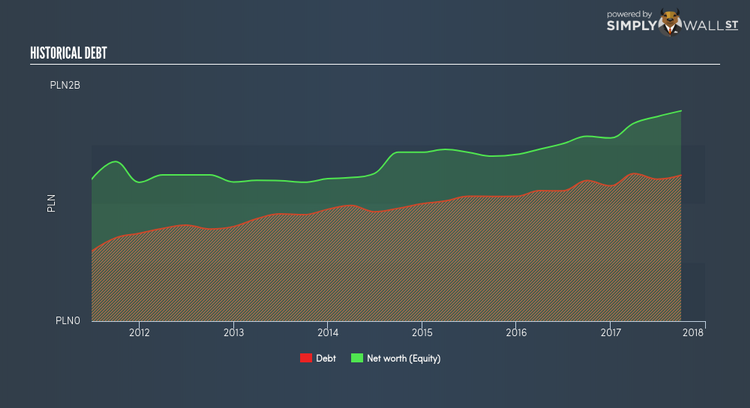What Investors Should Know About Boryszew SA.’s (WSE:BRS) Financial Strength

Boryszew SA. (WSE:BRS) is a small-cap stock with a market capitalization of ZŁ1.86B. While investors primarily focus on the growth potential and competitive landscape of the small-cap companies, they end up ignoring a key aspect, which could be the biggest threat to its existence: its financial health. Why is it important? Evaluating financial health as part of your investment thesis is essential, as mismanagement of capital can lead to bankruptcies, which occur at a higher rate for small-caps. I believe these basic checks tell most of the story you need to know. Nevertheless, since I only look at basic financial figures, I suggest you dig deeper yourself into BRS here.
Does BRS generate enough cash through operations?
BRS has built up its total debt levels in the last twelve months, from ZŁ1.06B to ZŁ1.15B , which comprises of short- and long-term debt. With this growth in debt, BRS currently has ZŁ242.88M remaining in cash and short-term investments , ready to deploy into the business. Moreover, BRS has generated cash from operations of ZŁ374.80M in the last twelve months, resulting in an operating cash to total debt ratio of 32.62%, signalling that BRS’s operating cash is sufficient to cover its debt. This ratio can also be interpreted as a measure of efficiency as an alternative to return on assets. In BRS’s case, it is able to generate 0.33x cash from its debt capital.
Does BRS’s liquid assets cover its short-term commitments?
Looking at BRS’s most recent ZŁ1.74B liabilities, the company has been able to meet these obligations given the level of current assets of ZŁ1.87B, with a current ratio of 1.07x. For Metals and Mining companies, this ratio is within a sensible range as there’s enough of a cash buffer without holding too capital in low return investments.
Does BRS face the risk of succumbing to its debt-load?
BRS is a relatively highly levered company with a debt-to-equity of 69.39%. This is not unusual for small-caps as debt tends to be a cheaper and faster source of funding for some businesses. We can check to see whether BRS is able to meet its debt obligations by looking at the net interest coverage ratio. A company generating earnings before interest and tax (EBIT) at least three times its net interest payments is considered financially sound. In BRS’s, case, the ratio of 11.74x suggests that interest is comfortably covered, which means that lenders may be inclined to lend more money to the company, as it is seen as safe in terms of payback.
Next Steps:
Although BRS’s debt level is towards the higher end of the spectrum, its cash flow coverage seems adequate to meet obligations which means its debt is being efficiently utilised. This may mean this is an optimal capital structure for the business, given that it is also meeting its short-term commitment. This is only a rough assessment of financial health, and I’m sure BRS has company-specific issues impacting its capital structure decisions. I suggest you continue to research Boryszew to get a more holistic view of the small-cap by looking at:
1. Future Outlook: What are well-informed industry analysts predicting for BRS’s future growth? Take a look at our free research report of analyst consensus for BRS’s outlook.
2. Valuation: What is BRS worth today? Is the stock undervalued, even when its growth outlook is factored into its intrinsic value? The intrinsic value infographic in our free research report helps visualize whether BRS is currently mispriced by the market.
3. Other High-Performing Stocks: Are there other stocks that provide better prospects with proven track records? Explore our free list of these great stocks here.
To help readers see pass the short term volatility of the financial market, we aim to bring you a long-term focused research analysis purely driven by fundamental data. Note that our analysis does not factor in the latest price sensitive company announcements.
The author is an independent contributor and at the time of publication had no position in the stocks mentioned.

